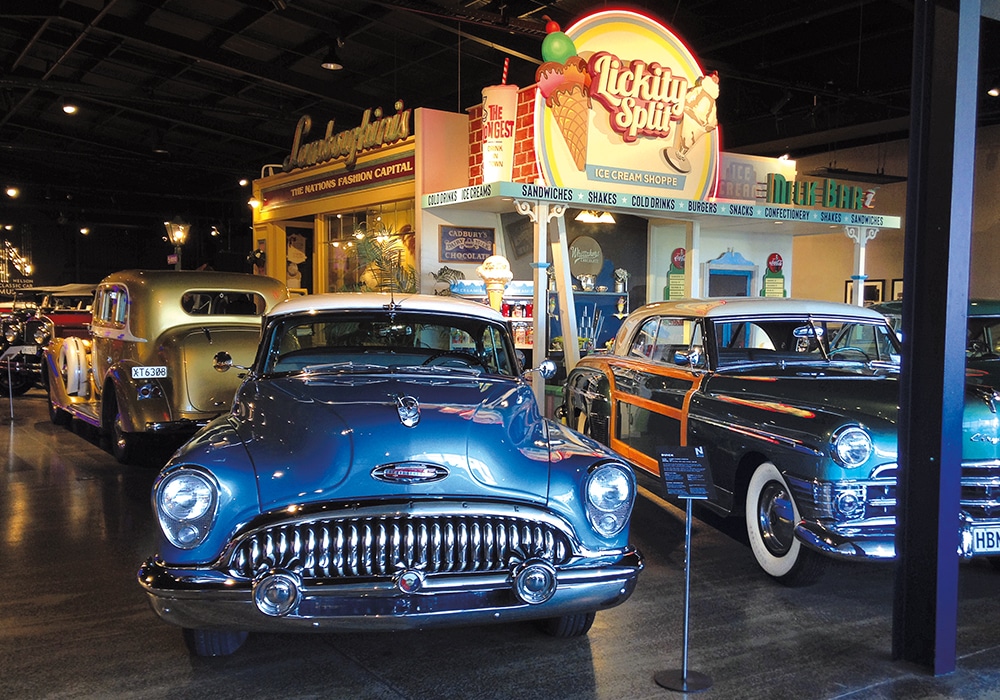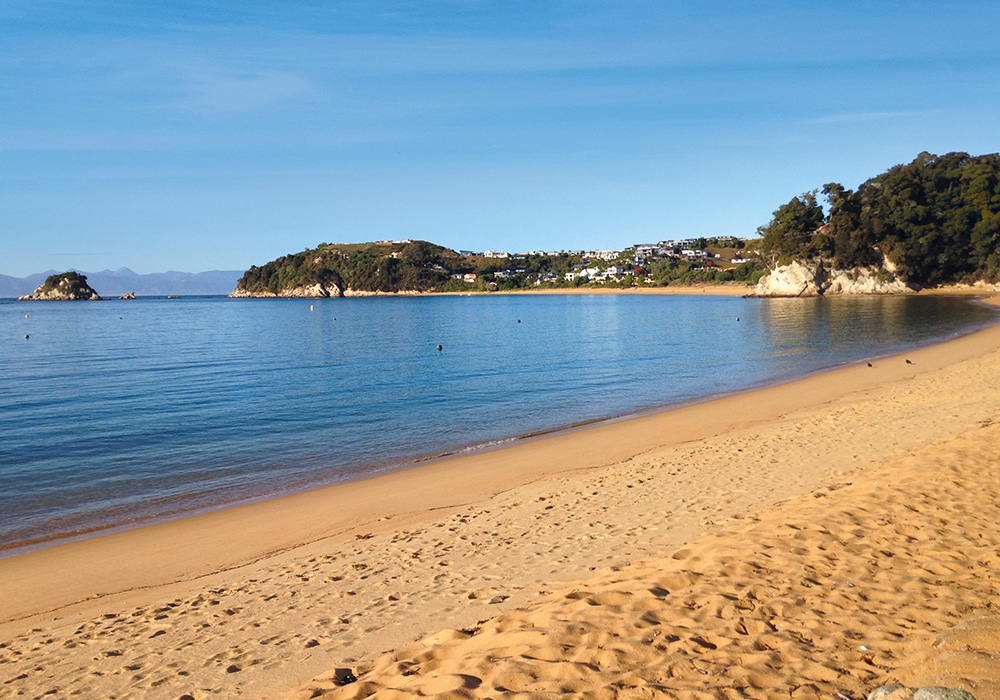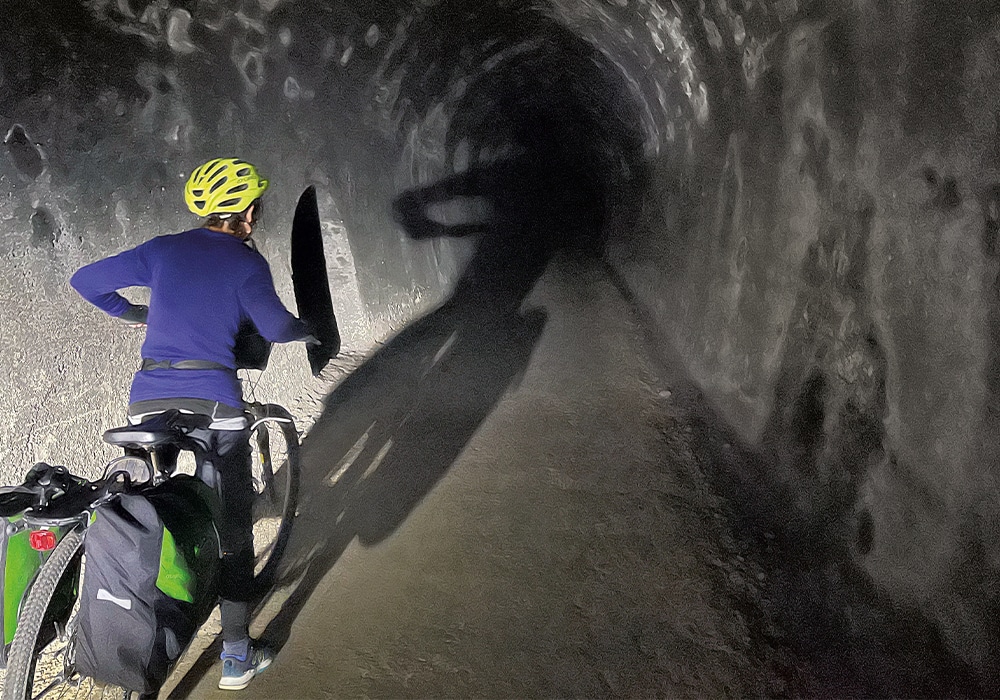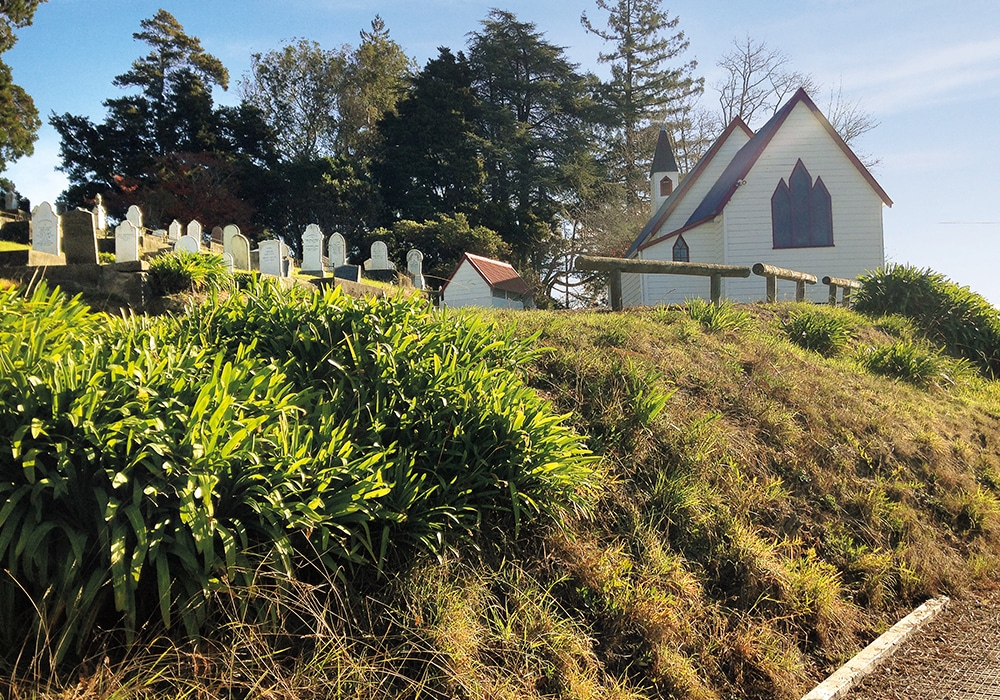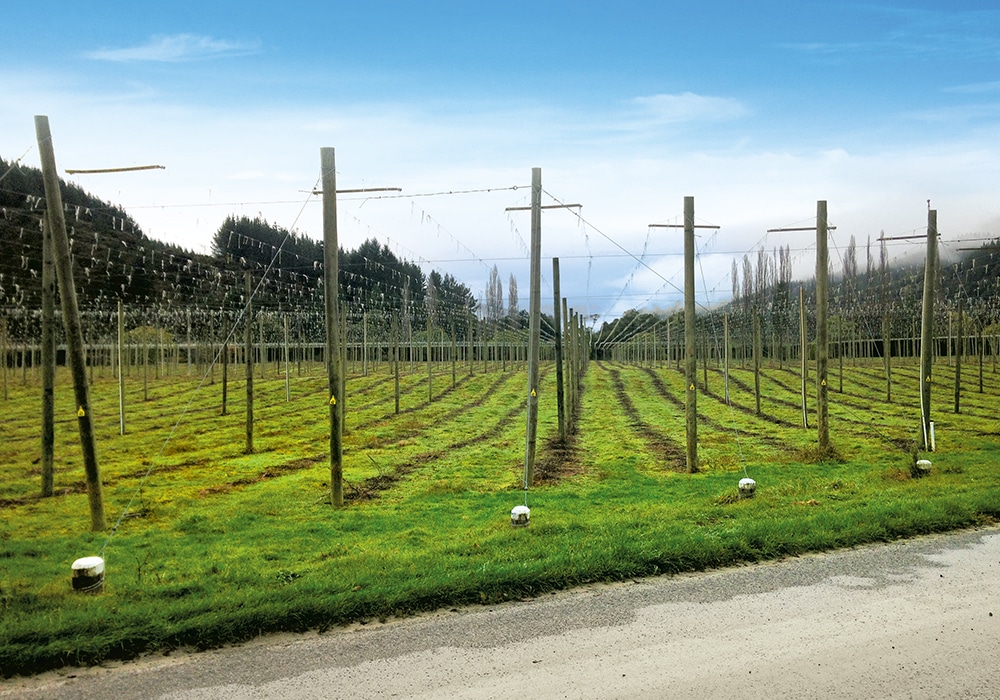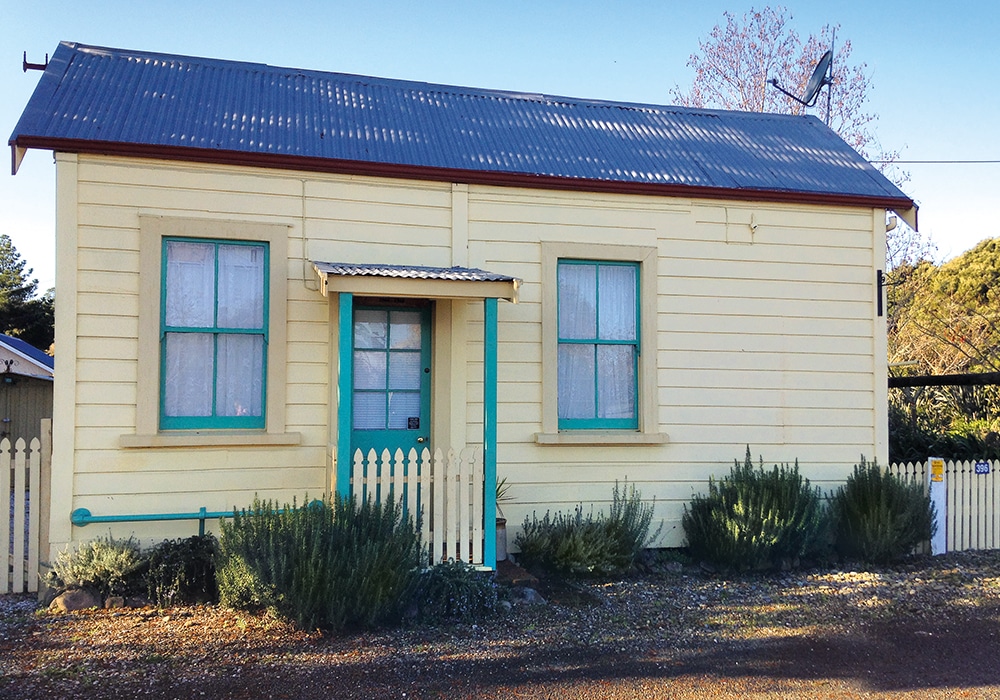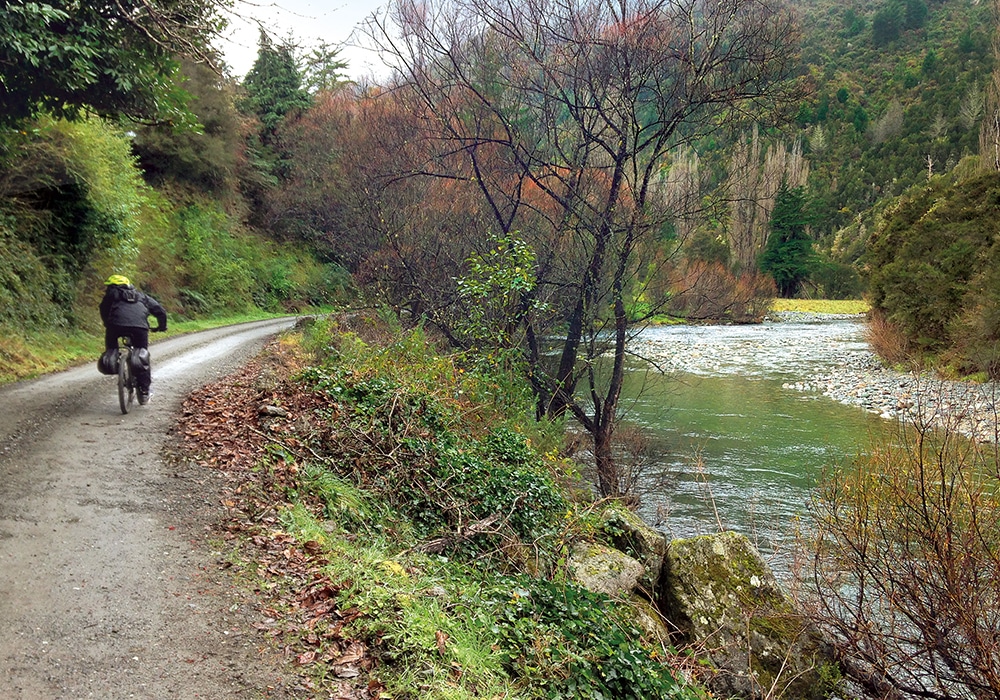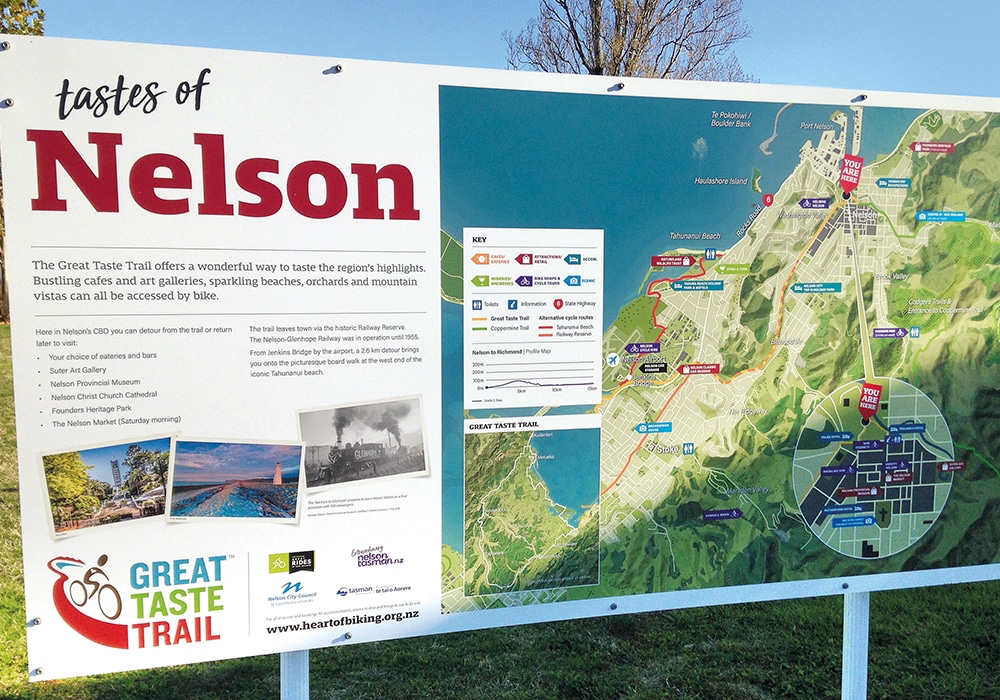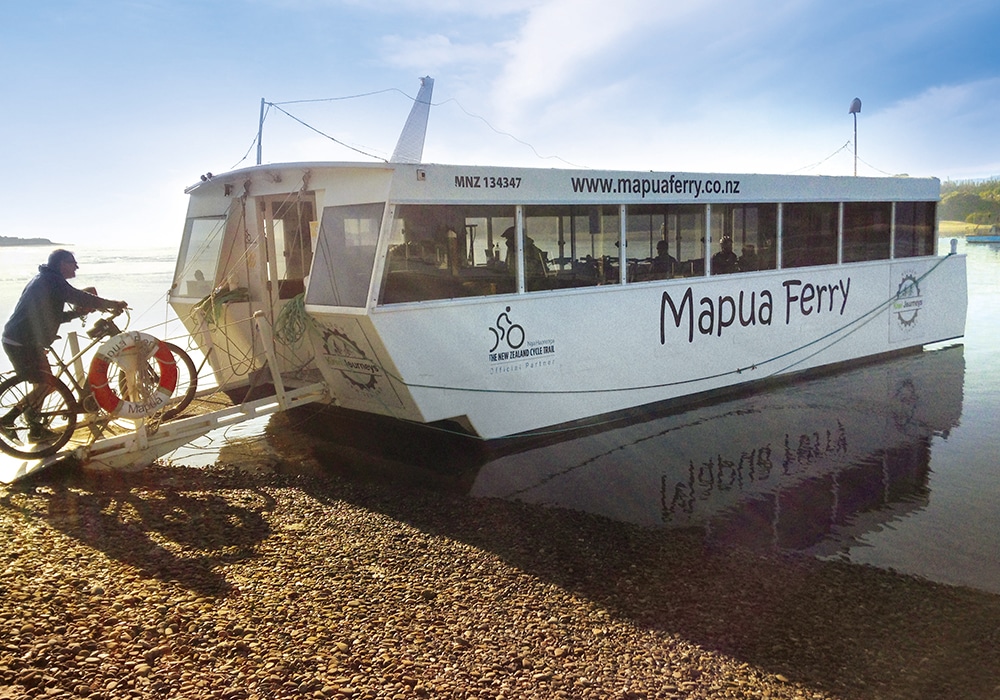Eleanor Hughes discovers that the cycle loop from Nelson and back is a feast for the eyes.
I thought ‘taste’ in the Great Taste Trail was all about the food of the Tasman region, but this Great Ride turned out to be more of a taster of Tasman’s scenery. With mountain bikes loaded with panniers to carry our gear for the four-day journey, we started out on our ride from Kiwi Journeys’ Nelson base into a southerly, howling headwind. It’s recommended to ride the trail anti-clockwise due to the prevailing wind but due to a necessary ferry, which off-season only ran in the weekend, we rode clockwise. (Now we know why they recommend the other way.)
After cycling alongside the roads, the sheltered rail reserve route offered a lovely green corridor. Back in the day, trains ran this way from Nelson between 1876 and 1955, reaching as far as Gowanbridge, around 95km south-west, by 1931.
There was plenty to explore around Richmond had we just been riding the 28km return to Nelson. Pic’s Peanut Butter World runs free tours on weekdays, there’s McCashin’s Brewery and Café, Eddyline Brewery and Pizzeria and Seifried Estate Winery. That certainly gave us a taste of what the area has to offer.
Richmond To Wakefield
We persevered on south-westwards battling the wind, passing vineyards where bare vines resembled witch’s fingers, paddocks of green leafy vegetables, and ploughed fields with silhouetted ranges in the distance. A suspension bridge took us over the wide-ish, stony Wairoa River just before Brightwater, Sir Ernest Rutherford’s birthplace. A memorial to him stands on the town’s southern edge backing onto rural land which the family farmed and where his home once stood. I followed the spiralling memorial path which tells of his life from Brightwater to Cambridge University, his science work (way beyond me!) and his 1908 Nobel Peace Prize.
Seven kilometres of countryside riding brought us to Wakefield. Settled in the 1840s, this small town is one of the country’s oldest inland settlements. White headstones stood in front of the 1846 white, wooden St John’s Anglican Church, the oldest church in the South Island. Just past the church you’ll find New Zealand’s oldest school in continuous use, established in 1843. Cycling Wakefield’s main road, the elegant 1909 Post Office caught my eye, a cupola adorning its roof.
Spooners Tunnel Bound
We hit the trail again after iced coffees at Café Rhubarbe. Bare wooden poles about five metres high, held lines aloft, remnants of hop plants hanging like moss from them, dotting the landscape as we approached Belgrove, once a railway stop. The 1898, 12-metre red tower and windmill used to pull up water for steam trains is one of only two remaining of the 116 constructed in the country. The Belgrove Tavern opposite was closed. The trail gradually inclined for another five kilometres. With continually buffeting wind, I’ll admit I was tempted to give up. We’d rarely managed higher than fourth gear all day. But it wasn’t an option, we were miles from anywhere. There’s no point giving up when you don’t have a Plan B!
Head torches brought a little dim light to the dark as night Spooners Tunnel. Opened in 1893, at 1,352m it’s the world’s fifth longest tunnel that’s open to walkers and cyclists. Black soot lined the walls as a reminder from long ago trains; the temperature inside a constant 10°C. Around its midway point riding became easier, the tunnel slightly descending. With my hands and face thoroughly chilled, the late afternoon sun I emerged into felt positively tropical.
I looked down on hop farms and passed old white railway signs with names in black of long ago settlements on the easy-riding 14km to Tapawera. It was nearly dark, 67km ridden in seven and a half hours, when we reached the invitingly-lit Tapawera Hotel, where dinner and a good night’s sleep in a unit behind the tavern was a welcome respite.
The original, tiny one-room Kiwi railway station is now home to Tapawera and Valley’s Museum. Raspberries and tobacco were once farmed here, and the area’s rich rail history includes the sit-down protest by women against the railway closure in the 1950s. After a quick visit here, we set off on our bikes for day two.
Baton Saddle To Kaiteriteri
Treetops peeked through the low cloud hanging around the hilltops as we rode a rural road, passing hop farms and a few llama before joining a gravel road to the turn off for Baton Saddle. My legs were screaming loudly on the hideously steep road winding between pine and peeling eucalyptus trees, but we got the reward of an exhilarating freewheel down from the 294m saddle.
Crossing the new Baton River Swing Bridge, we followed the rain on a tin roof-sounding river, passing leafless poplar trees, farms, hay sheds and a plant nursery under acres of plastic that dotted the landscape. Bright red apples lay on the ground in orchards. Hazelnuts and walnuts were for sale at roadside stalls, kiwifruit vines grew tepee-like. We had a look through the little districts of Woodstock, Pokororo and Ngātīmoti, with bridges taking us over rivers, creeks and streams that headed into the wide, bouldered Motueka River. The roadside stall at Little Shaggery Farm’s featured an impressive display of vinegars, dried fruit, juices, preserves and sauces, but unfortunately our panniers were too full for purchasing.
Mrs Smiths Café and Vegetables on Riwaka’s main road looked very tempting, but Eden Lodge Cheesery and the Hop Federation for beer tasting sounded better. However, thanks to my hopeless map reading skills, I actually found neither. Never mind; only another seven kilometres remained to Kaiteriteri. A boardwalk led me around the mangrove-fringed coastline; with the tide out, mudflats and sand glowed in several shades of yellow. A memorial to Nelson’s founder, Captain Arthur Wakefield, who landed in the vicinity in October 1841, stood roadside. I pushed the bike uphill, then whizzed down to Kaiteriteri Mountain Bike Park where an inclining dirt track with switchbacks took me through the bush, offering tantalising peeks of the Marlborough Sounds. From here I braked continuously down to Kaiteriteri’s stunning, burnished gold sand beach, reaching it seven and a quarter hours, and 75km, after setting out. Kaiteri Lodge was home for the night; a camping ground was next door. The Beached Whale Restaurant & Bar was open to diners; the supermarket was well stocked. What more could a tired cyclist need?
Kaiteriteri To Mapua
With day three’s ride a very doable 44km, we enjoyed a leisurely start enjoying the sun on the beachfront where pictures showed campers in the 1930s through to the 1970s and boats littering the bay. Captain Wakefield met with Māori chiefs here, originally planning to settle a main town at Kaiteriteri. Returning to Riwaka, we headed south-east to Motueka, bypassing its main street in favour of riding the coastline. I took a walk out onto the rippled sand of Motueka Sandspit.
An important area for migratory birds; in summer thousands of them roost and breed here. The rusted hull of the Janie Seddon, once a submarine mining vessel serving in both world wars, lies on Motueka’s foreshore. Heading inland at the small settlement of Mariri, we cycled the pretty country roads, passing kiwifruit vines and apple orchards as we rode. The pain of a steep gravel ascent was worth the lunchtime views of distant snow-sprinkled ranges hemming green carpeted, rolling land. The Marlborough Sounds were inkblots; the coast we’d just ridden distant.
Sweeping descents took us past Frost and Fire Gallery, where I was once again tempted, this time by some lovely bowls and sculptures. A detour to Kina Beach and Moutere Inlet and Wildlife Reserve was a possibility, but we continued to Tasman. A yellow wooden cottage, the post office from 1966 to 1988, stood almost opposite the Tasman General Store; the red and white-painted Jester House Café, only open on Fridays, was doing a roaring trade. Another ascent and we freewheeled into Ruby Bay, named for the ruby-coloured jasper found there. Nelson sprawled along the coastline opposite. Not far on, Mapua Beach is hemmed by the sea and Waimea Estuary. We stopped at Mapua’s Four Square for supplies, passing by a café, bakery and the Sprig and Fern Tavern. After five and a half hours in the saddle, we reached our small cabin at Mapua Leisure Park, located across a causeway with views over Waimea Estuary to Rabbit Island.
Mapua To Nelson
We arrived the next morning at Mapua Wharf for the 10am ferry, allowing some time to spend in Port Mapua Maritime Museum. The exhibition covers Nelson and Tasman Bay’s coastline history including the flax and apple industries, a lime and marble factory and information on early vessels which sailed the area. The old wharf coolstores are now thriving retail spaces and cafés. It’s a five-minute ferry ride to Rabbit Island, a recreation reserve, where a 4.5km pine-lined trail runs parallel with the sandy beach. Mist hanging above the sea gave the illusion the opposite shoreline was floating. Emerging from the forest, we rode the Waimea Inlet, the South Island’s largest estuary. The August floods left the trail with one damaged section along the Waimea Inlet, but the damage was quickly rectified, and the trail is now running as normal.
Bronze reeds and grasses, vivid green moss and turquoise water made a stunning landscape, with snow-capped mountains beyond. Several white-faced herons, their backs a blueish-grey, stood statue-like in the water, and pūkeko ran in fields. An unmissable stop is the Nelson Classic Car Museum. A 1950s American milkbar façade sets the scene for gleaming long Buicks, Chevrolets and Cadillacs; vintage cars included Renaults, a Ford Model T and Packards. Home to around 150 classic cars, it includes the world’s fastest Mini, raced at Bonneville, Utah, and information on Tahunanui Back Beach races held from 1949 – 1977. The Four Square façade with a loaded-up Holden station wagon and Morris Minors evoked childhood memories for me. An hour simply disappeared.
From here, it was time to head for home. We cycled parallel with the sweeping, sandy Tahunanui Beach, where a statue of Abel Tasman looks out to Tasman Bay, and returned to Bike Journeys’ depot, tired but very happy. With the final 35 kilometres done for the day, our 222km journey through the Tasman region was over. What a taster!
More Information
• A number of camping grounds, park over properties and NZMCA campsites can be found throughout the Tasman Nelson region. Visit nzmca.org.nz
• Great Taste Trail: heartofbiking.org. nz/tasmans-great-taste-trail
• Kiwi Journeys: kiwijourneys.co.nz
• Nelson Classic Car Museum: nelsonclassiccarmuseum.nz
